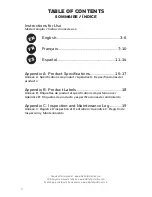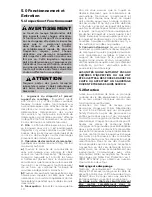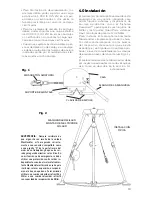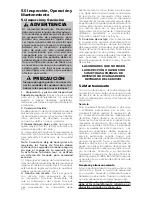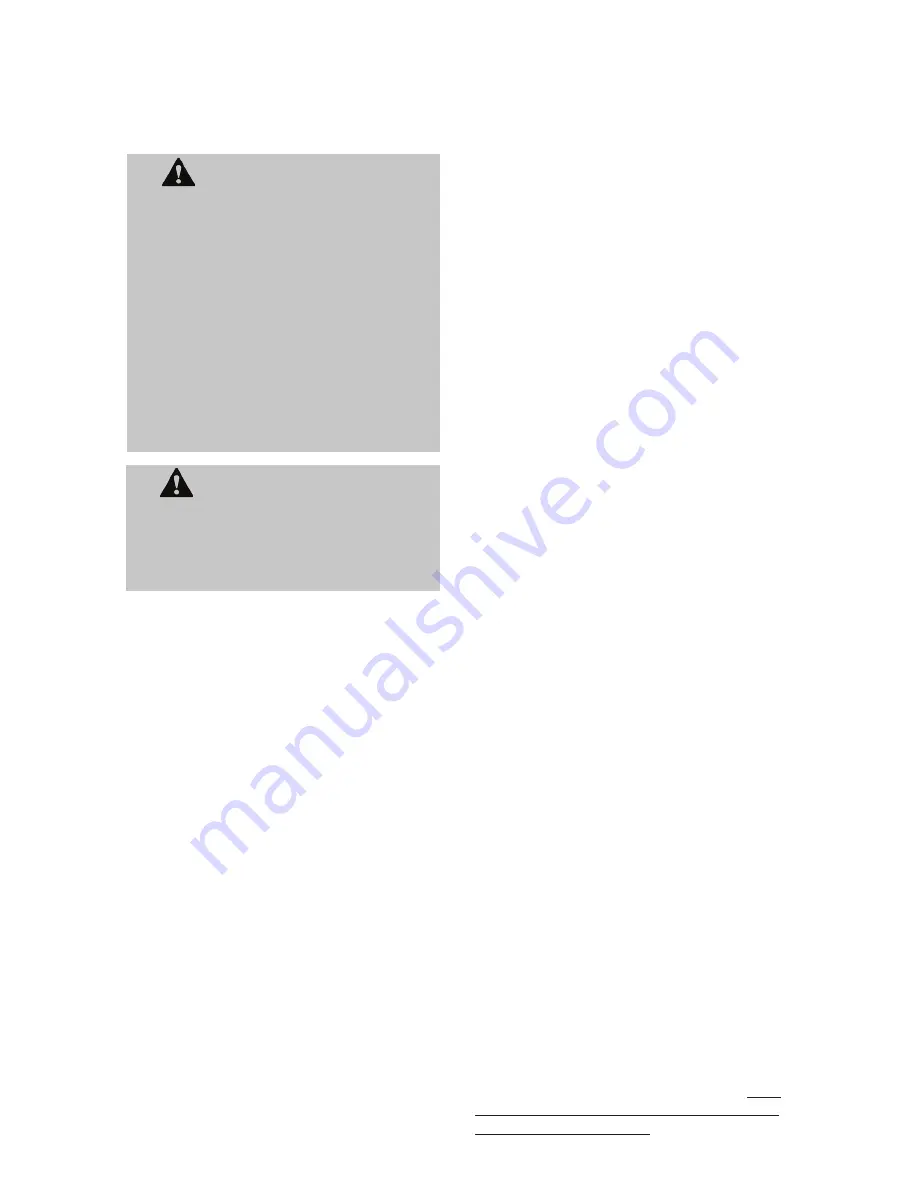
6
5.0 Inspection, Operation
and Maintenance
5.1 Inspection and Operation
WARNING
The ManHandler Hoist/Winch must be
inspected before each use. If the unit is
used as an emergency retrieval device,
it must be inspected prior to personnel
entering the confined space in order to
facilitate a quick recovery. In addition
to the inspection required before each
use, a competent person must inspect
this unit at least annually. This periodic
inspection should be set by the user’s
employer. Annual factory recertification
is not required unless the unit is
subjected to the forces of arresting a fall
or affecting a rescue
CAUTION
Always wear gloves when inspecting
wire rope/cable units; broken strands
can cause injury!
1.
Device Housing and Parts/Mounting
Bracket:
Inspect the unit for bent,
cracked, distorted, worn, malfunctioning
or damaged parts; loose fasteners
or missing parts/components;
deterioration; deformation; corrosion;
or any other indications of damage/
problems that may affect the integrity
and operation of the product. If in doubt,
contact the manufacturer.
2. Lifeline:
The entire length of the lifeline
should be checked for signs of damage.
Inspect for cuts or broken strands,
unusual wearing patterns, corrosion,
kinks, or chemical damage.
3. Lowering and Raising Operation:
Apply
a light tension [50 lbs. (23kg) minimum]
on the cable lifeline, and:
a) Rotate the crank handle in a counter
clockwise direction to extend cable from
the unit (lower).
Note: When the cranking is stopped,
the friction brakes must securely
hold the load without the crank
handle rotating. Should this brake
malfunction, an independent
overspeed braking system will be
activated.
b) Rotate the crank handle clockwise to
return the cable to the unit (raise). There
should be a clicking noise heard while
the cable is being cranked into the unit.
4. Snap Hook:
Check the snap hook to be
sure that the gate operates freely, the
locking mechanism functions properly,
and the swivel rotates smoothly. The
gate should seat into the nose without
binding and should not be distorted
or obstructed. The gate spring should
exert sufficient force to firmly close
the gate. The locking mechanism must
prevent the gate from opening when the
gate is closed. Inspect the snap hook
for any signs of damage to the gate;
bent, cracked, or distorted components;
corrosion or pitted surfaces.
5. Anchorage Connection:
Make sure
the unit is properly anchored to the
mounting device and the push pins are
properly installed through the mounting
bracket. If the system is equipped with a
sheave and carabiner, check to ensure
the carabiner is properly seated and in
the locked position between the sheave
and anchorage point.
UNITS THAT DO NOT PASS INSPECTION
OR HAVE BEEN SUBJECTED TO THE
FORCES OF ARRESTING A FALL OR
AFFECTING A RESCUE MUST BE
REMOVED FROM SERVICE.
5.2 Maintenance
Basic care of all safety equipment will pro-
long the durable life of the unit and will con-
tribute toward the performance of its vital
safety function.
Servicing
Servicing of the Miller ManHandler
Hoist/Winch must only be carried out
by Miller Fall Protection or persons or
entities authorized in writing by Miller Fall
Protection. A record log of all servicing
and inspection dates for this device
must be maintained. Only original Miller
replacement parts are approved for use
in this device. Repairable devices must be
returned to our facilities or an approved
service center for physical inspection and
recertification whenever they do not pass
inspection or have been subjected to the
forces of arresting a fall or affecting a
rescue. Non-repairable devices that do not
pass inspection must be disposed of in a
manner to prevent inadvertent further use.
Contact your Miller distributor for a return
authorization number.
Cleaning and Storage
Periodically clean the exterior of the device
and wipe the lifeline using a damp cloth
and mild detergent. Towel dry. Store in a
clean, dry location when not in use.
The
lifeline should be fully retracted into the
device when not in use.


